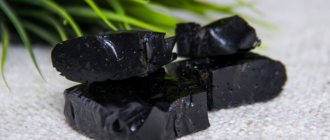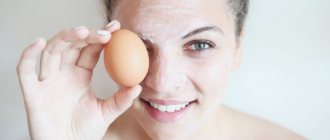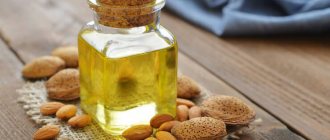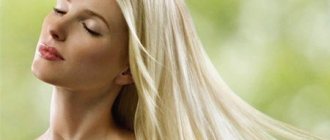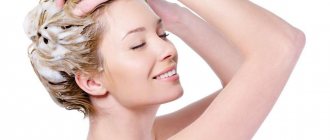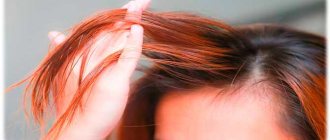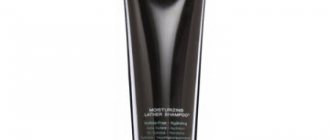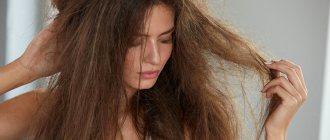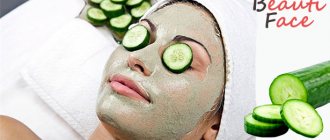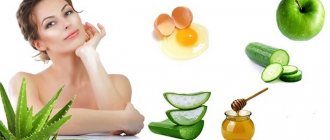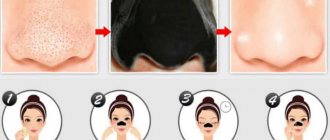Every representative of the fair half of humanity dreams of her skin remaining soft, smooth and elastic for as long as possible. And in order to make this desire come true, women constantly try out all sorts of means on themselves. Some prefer to use exclusively branded cosmetics, others prefer inexpensive creams and masks from little-known manufacturers. And still others use compositions from the arsenal of folk cosmetology, which are often in no way inferior in effectiveness to factory products.
There are also more inventive ladies who can find many ways to use the same product, but for different purposes. Take henna, for example. Everyone knows about it as a natural hair dye, but few people know that this incredibly useful product can also be used in facial skin care. We are, of course, not talking about red or colored henna, but about a colorless powder used to strengthen and heal weakened curls. How does colorless henna act on the skin and what cosmetic problems can it cope with?
Face mask with colorless henna. Colorless henna for the face?
We all know that colorless henna has a strengthening effect on hair and promotes hair growth.
But did you know that it can also be used for facial care? Colorless henna has cosmetic and medicinal properties for facial skin: eliminates inflammatory processes, nourishes, cleanses, restores the skin, has a pronounced antifungal, antibacterial and anti-inflammatory effect, whitens the skin.
Henna does not cause allergies or itchy skin and is a natural, environmentally friendly product.
Colorless henna is used in the form of masks for cosmetic procedures for skin rejuvenation. Henna contains a special acid that binds collagen in skin cells, which is important for anti-aging procedures. The astringent properties make colorless henna a tonic and it is used against inflammation, boils, bruises and even herpes.
Cosmetologists recommend that many teenagers use colorless henna to treat various types of inflammatory processes on problem skin - pimples, acne, blackheads. For problem skin, tea tree oil is added to colorless henna. The result is a medicinal product that relieves inflammation, normalizes sebum production and dries out the facial skin.
For girls who would like to lighten freckles and give their face a matte tint, it is useful to use colorless henna with boric acid infusion (2-3 drops.
Face masks with colorless henna.
Metal utensils should not be used to prepare masks from colorless henna.
Henna masks are used to treat excessively oily skin, seborrhea, nutrition, rejuvenation, lifting, skin tone, cleansing, whitening, against acne and blackheads, as well as for nail and body care.
For the best effect of the mask, the skin must be prepared - cleansed and treated with tonic or lotion, so the components of the mask are better absorbed by the skin.
Recipes for masks with colorless henna for different skin types.
1. mask for all skin types - cleansing, nutrition, tone.
1-2 Table. Pour henna spoons with colorless hot water until thick sour cream forms. Cool and apply to cleansed face for 20 minutes. Rinse off with warm water. Then, if desired, cream.
2. mask for oily and normal skin.
Mix colorless henna with heated kefir until a homogeneous mass is obtained, and apply to a cleansed face for 20 minutes. Rinse off with warm water. Then, if desired, cream.
3. nourishing mask for dry skin.
After cooling, add sour cream and vitamin A to the steeply brewed colorless henna. Apply the mask to prepared skin for 20 minutes. Rinse off with warm water. Then, if desired, cream.
4. mask for skin rejuvenation, tone and lifting.
To the mask with colorless henna - recipe number 1, add a few drops of rosewood or sandalwood essential oil. Leave for 15-20 minutes until dry.
5. mask for teenagers with contaminated skin - against blackheads.
Brew 1-2 tablespoons of boiling water. Spoons of colorless henna, mix thoroughly to a paste consistency. Leave covered for 5-10 minutes. Apply a warm or even hot mask in a thick layer to contaminated areas of the skin, but so as not to burn the skin. Keep until dry. A crust will form; carefully moisten the dried mask to remove the henna. After moistening your face with the remains of the mask, you can gently massage it in a circular motion for 1-2 minutes. - It will be an excellent peeling. Rinse with warm water, then cold. Apply cream according to skin type. It is advisable to do the cleansing procedure for blackheads in the evening or at night.
6. cleansing mask for any skin type.
1 tbsp. l. colorless henna and 1 tbsp. l. white clay, dilute with warm water or chamomile decoction to a paste. Apply the mask to prepared skin for 20 minutes. Rinse with warm water, then cold. Apply cream if desired.
What are the benefits of henna for skin?
The skin of the face is an extremely sensitive and important area that requires careful treatment. In pursuit of beauty, many fashionistas are ready to spend fortunes and even go under a surgeon’s scalpel, often forgetting about the accessible and effective methods of folk wisdom. Iranian henna is rightfully considered one of the most effective tonic and rejuvenating products for the skin.
Action on the skin:
- The rejuvenation effect is manifested in smoothing out fine wrinkles and increasing skin elasticity with constant use.
- The tonic effect of some components will help increase resistance to external factors.
- Anti-inflammatory and antibacterial effects will allow it to be used in the fight against dermatological problems: rashes, pimples and acne.
- A cleanser based on colorless henna has proven itself to be excellent for a wide variety of skin types.
- A unique mixture of dry, colorless henna powder will also provide basic nutrition to aging or tired skin. The amino acids included in the composition help to establish cellular metabolism and the absorption of nutritional components.
All these wonderful transformations will not take long to happen if you use a mask with henna regularly according to one of the recipes below.
Watch the video recipe for a face mask with colorless henna
Secrets of beautiful hair from women from the countries of the East and Asia. The best recipes for hair masks with colorless henna. You will learn how to use the plant for colored hair, bleached hair, for growth and thickness.
You can learn about the use of hair masks with orange essential oil, recipes and reviews of masks from this article.
Watch the video recipe for a hair mask with mayonnaise and the recipe for preparing it at home https://ilcosmetic.ru/volosy/maski/kak-sdelat-iz-majoneza-retsepty.html
Homemade face mask with colorless henna. Face mask made from colorless henna
Natural ingredients help a woman stay young and beautiful without visiting beauty salons and using expensive products. You can prepare masks yourself, and the effect will amaze you. It is important to choose the right components depending on your skin type. In this article you will learn how to prepare a face mask from colorless henna at home.
Residents of the Ancient East have been using colored henna to dye their hair for a long time. But not everyone knows that there is a special type of substance that is beneficial for the dermis.
Colorless henna is an environmentally friendly powder that is extracted from the lawsonia bush. The leaves of the plant are collected, dried and ground to a powder, after which the product is ready for use. A recipe for a rejuvenating face mask made from colorless henna is popular among Asian women. That's why Asian women have such smooth and delicate skin.
Colorless henna: composition and beneficial properties
A unique composition that has no analogues:
- Fisolen - relieves minor inflammation of small pimples and acne.
- Rutin - strengthens small blood vessels. The dermis acquires an even color, redness disappears.
- Betaine - has a deep nourishing effect and moisturizes dry skin. Recommended for use on dermis prone to peeling.
- Chrysophanol - helps to say goodbye to acne and blackheads, inflammation, irritation and purulent diseases. With regular use, you will say goodbye to unpleasant diseases forever.
Scientists have discovered that the product contains a lot of carotene. It helps improve natural skin color and even out tone.
A large number of different microelements and vitamins deeply nourish and moisturize the dermis. Women who made a mask from colorless henna are impressed with the result and leave positive reviews.
The natural composition of the product does not cause an allergic reaction in girls. This unusual powder does not contain chemical elements and is suitable for any skin type.
Mask of colorless henna - who is it suitable for?
If the skin itches and peels, a mask of colorless powder is necessary. The dry type of dermis ages earlier than others and wrinkles appear on it. To prevent this, nourishing masks are used. Colorless henna creates a film that protects the dermis from external negative influences, makes it velvety and silky, and retains moisture.
The mask is also suitable for oily skin. The active work of the sebaceous glands leads to the fact that excess fat accumulates in the pores. Because of this, acne, blackheads, pimples and other inflammatory diseases appear. Using a mask of colorless henna deeply cleanses the dermis and improves the functioning of the sebaceous glands. Important: apply masks regularly so that the effect lasts longer.
Colorless powder is useful for normal dermis type. Vitamins of group B, C will return the skin to a healthy appearance, make it elastic and radiant.
For problem skin types, the product can be used together with other cosmetics. Choose foam or gels for delicate cleaning. Buy an antibacterial agent at the pharmacy. Colorless henna is useful, but not omnipotent. For problem skin types, the desired effect will be achieved only through complex work with other products.
How to use colorless henna correctly
Before the procedure, be sure to do an allergic reaction test. Apply the prepared mixture to your hand or elbow and after twenty minutes, rinse with warm water. If there are no redness or rashes, apply the mask to your face.
Recommendations for use:
- To prepare a face mask: mix the product with water. On store shelves you can find a powdered mixture of henna with the addition of other components - we do not recommend using it. Such a product is not natural; it contains chemical impurities.
- Use ceramic, glass or plastic dishes.
- Pour a small amount of powder with clean boiled water for twenty minutes. Wait - the powder should completely dissolve. For the best effect, use decoctions of medicinal plants (sage, nettle or chamomile).
- Be sure to cleanse your facial skin. Wash off your cosmetics with a special foam or gel selected for your dermis type. Use scrub and peeling.
- It is recommended to keep the mask for no more than twenty minutes. During this time, all useful components will enter the pores. If the product begins to dry out, do not wait, rinse with warm water. Otherwise, you can dry out your skin.
- Pay attention to the composition. Foreign components are unsuitable for creating homemade masks from natural ingredients.
Examples of preparing masks from colorless henna
Classic version of the mask. Suitable for normal dermis - moisturizes and nourishes.
- Take a tablespoon of powder and add herbal infusion or boiled water. Wait fifteen minutes.
- Heat the composition in a water bath and apply to the top layer of the epidermis.
- Try to apply a thin layer evenly (use a special cosmetic brush).
- After twenty minutes, rinse with water at room temperature. If the mixture starts to dry out early, spray with warm water. After the procedure, moisturize the skin with cream.
To moisturize dry skin, add olive oil or sour cream with a high percentage of fat (2:1:1 ratio).
To cleanse oily skin, add a little kefir to the mixture. You will prepare a natural, delicate peeling.
If you want to get rid of age spots and freckles, add parsley juice (use a fresh plant). For the best effect, the procedure is carried out once a week for three months.
A universal option for moisturizing, nourishing and rejuvenating is adding essential oils.
Don't pour a lot - a few drops will do. The effect depends on the chosen oil.
- Pink - moisturizes and nourishes.
- Tea - reduces inflammation, soothes the dermis.
- Lemon - whitens.
Always stay beautiful!
Origin and properties of henna
Colorless and white henna is obtained from the dried, powdered stems of a plant called Lawsonia, which grows in hot countries. These types of henna do not contain coloring pigments, unlike the product obtained from the leaves.
Biologists tested the chemical composition of this natural component, finding the following active organic compounds in it:
- fisalen, which effectively suppresses inflammatory processes and soothes irritated epidermis;
- rutin, which increases the strength of capillaries, strengthens the walls of blood vessels, accelerates the flow of oxygen to cells;
- betaine, which deeply moisturizes the skin, retains moisture in cells, and protects against dryness;
- chrysophanol, which stops the growth of microbes and has an antifungal effect;
- emodin, which accelerates regeneration, cell restoration, suppresses inflammatory processes;
- carotene, which has a protective effect that strengthens the skin structure;
- zeaxanthin, rejuvenating, deeply cleansing, eliminating the formation of free radicals that provoke cell aging.
Expert opinion
TRY IT!
Ancient eastern manuscripts contain information about the widespread use of henna as an effective healing and rejuvenating agent used by famous healers.
Face mask with henna and olive oil. What are the benefits of a henna mask?
The benefits of henna masks for facial skin, as well as their secret, lie in the miraculous effects of such components as:
- Chrysophanol. It has wound healing and antiseptic properties;
- Emodin relieves inflammation and activates the regeneration process;
- Carotene improves complexion and skin structure;
- Betaine nourishes and moisturizes well, which is why henna-based products are suitable for dry and chapped skin;
- Ceaxanthin “pulls out” contaminants even from deep subcutaneous layers;
- Rutin makes the skin “breathe”, opening up oxygen and strengthening blood vessels;
- Fisalen relieves inflammation for various problems on the facial skin.
It is worth noting that only colorless henna can be used for cosmetic procedures, because any other type of it can leave unsightly spots on the affected area.
Indications for use
Henna in masks is recommended for any skin type, because its components are universal and help get rid of a wide variety of cosmetic imperfections. Using henna is an effective way to get rid of problems such as:
- Rashes and inflammations in problem skin types;
- Signs of withering and aging (wrinkles, sagging);
- Unnatural complexion, pigmentation;
- Excessive dryness, flaking.
Products with ground lavsonia leaves are also suitable for normal skin types: they provide “impregnation” with useful substances, which slows down the aging process, prevents premature aging and the appearance of more complex skin diseases.
The only contraindication for use is individual intolerance, but otherwise this ingredient is suitable for everyone who wants to improve their appearance.
Terms of use
Some useful tips for using masks:
- Before applying the finished composition to your face, you need to wash your face with a cleansing gel, or use a scrub;
- Do not keep any of the masks for more than 25 minutes;
- Carry out a full course of treatment lasting 1-2 months, maintaining a frequency of sessions 2-3 times a week.
Features of preparation and use
Despite their safety due to their natural origin, all masks with colorless henna must be tested for allergic reactions before use. To do this, spread a little of the prepared mixture onto the skin of the wrist or elbow and wait a quarter of an hour. In the absence of any reaction (redness, burning, itching), the product can be used for its intended purpose.
The mask must be prepared according to the rules
Before applying the mask, you should first cleanse the skin of cosmetics, dust, and sebum to ensure better penetration and effect of beneficial substances on the skin. This procedure can be carried out using any tonic or milk. If the goal is to get rid of open comedones (blackheads), then it is better to steam your face to open the pores.
People with dry skin need to be especially careful with henna, as the powder significantly dries out the epidermis and can aggravate the situation. In this case, it is important to choose the right recipe.
Henna masks are prepared in ceramic or glass containers. Contact of henna with metal should be avoided, otherwise oxidation may occur.
In acne masks, henna is combined with ingredients such as eggs, vegetable oils, decoctions of medicinal herbs and others. The main condition is that all ingredients are of natural origin.
Mask with white henna. Recipes for hair masks with henna
- Masks with henna to strengthen hair: 1) You will need: henna (already diluted with water), beaten yolk, burdock oil, sour cream. Add all ingredients to the slurry (butter and sour cream 2 tablespoons each), mix. Apply to hair. 2) Recipe with blue clay. Mix henna and clay with hot water, add a few drops of tea tree essential oil (no more than 5 drops).
Mask for split ends. Henna copes perfectly with such a problem as split ends. Surely many people who have shoulder-length hair or shorter experience this. Then you should try one of the masks: 1) Pour a full spoon of flaxseed into 1 glass of boiling water and leave. Then heat it to 70°C and pour in the henna, using the infusion instead of water. Apply for 50-60 minutes. 2) Mix diluted henna with a few tablespoons of mayonnaise, add honey.
Hair mask with henna at home for dry hair: 1) dilute 30 g of henna with hot milk, add a few tablespoons of honey. 2) Pour hot water over the required amount of henna, add chopped banana and mayonnaise. 3) Dilute henna with hot whey, add honey and burdock oil. Leave on hair for 45 minutes. 4) Pour a few tablespoons of warm olive oil into the prepared henna, add mashed avocado pulp, mix. Apply to hair.
Masks for oily hair: 1) Dilute henna with warm sour milk, add pre-soaked rye bread (know that a hair mask made from black bread has a whole range of useful substances); 2) Soften the ripe tomato and add it to the henna diluted with water.
Recipes for nourishing masks: 1) Vitamin hair mask henna and parsley with dill, which must be chopped. Pour hot green tea over henna and mix with herbs. Blondes should use it with caution; the mask has a somewhat coloring effect. 2) Oil mask with henna. In a water bath, heat a mixture of burdock, castor and olive oils to a temperature pleasant for the skin, pour henna over this mixture. Apply to the head, cover with polyethylene and a warm towel, leave for thirty-five to forty minutes.
Hair mask with henna and kefir. Recipe: heat 200 g of kefir in a water bath, pour henna over it, beat in chicken yolk. You can keep this mask for 40-45 minutes.
Recipe for hair loss. Two tablespoons of lemon juice, a little cottage cheese, honey - mix all the ingredients and add to the henna paste. Rub the mixture into the roots of your hair, first put on a plastic cap and a warm cap on top.
Henna masks to accelerate hair growth. 1) Colorless henna - well restores the vitality of hair and its beauty. Henna prepared in the usual way + a spoonful of honey + juice of one lemon + burdock oil. Add all ingredients to henna one spoon at a time. 2) A henna hair mask with the addition of mustard for hair growth will not only enhance the germination of curls, but will make the hair smooth and shiny. To do this, you need to dilute the henna, add a tablespoon of dry mustard and honey, and stir. Apply the mixture for half an hour. By the way, a mustard hair growth mask at home is recommended by many of our readers.
Useful properties of colorless henna
The healing effect of neutral henna is due to its rich composition. Here are just some of the microelements and vitamins it contains:
- Trimethylglycine (betaine) - retains moisture in the hair shaft, acting as a natural moisturizer, restoring its structure.
- Rutin - prevents graying and hair loss by strengthening hair follicles.
- Carotene - saturates with collagen, due to which split ends and damaged areas of hair are restored.
- Emodin - makes hair shiny.
- Zeaxanthin is a natural antioxidant from the group of oxygen-containing carotenoids, which is indispensable for early baldness and against dandruff.
- Tannins - reanimate damaged strands.
- Anthraquinone, chrysophanol are natural antiseptics that treat seborrhea, eliminate dandruff and protect against other skin diseases.
- B vitamins are necessary for better absorption of collagen and its accumulation in the hair shaft.
Regular use of henna leads to the following results:
- hair stops falling out;
- curl growth accelerates;
- root volume increases;
- hair scales are strengthened;
- shine and silkiness appear;
- skin diseases in the form of seborrhea, itching, dermatitis, dandruff disappear;
- The hydrolipid balance of the skin is regulated.
Colorless henna reduces sebum production. Therefore, it is more suitable for owners of oily hair. If the strands are naturally too dry, then with frequent use of this product they become brittle and lifeless.
Amazing properties
Thanks to a huge number of active elements, the product has a positive effect on the skin:
- tones;
- has a rejuvenating effect;
- cleanses and removes blackheads;
- has an antibacterial effect.
A natural herbal remedy is added to masks for any type of facial skin; it is safe and hypoallergenic. Side effects occur extremely rarely; use does not cause burning or itching. But to eliminate unwanted consequences, you need to apply a small amount to the inside of your hand. This should be done with every new product.
